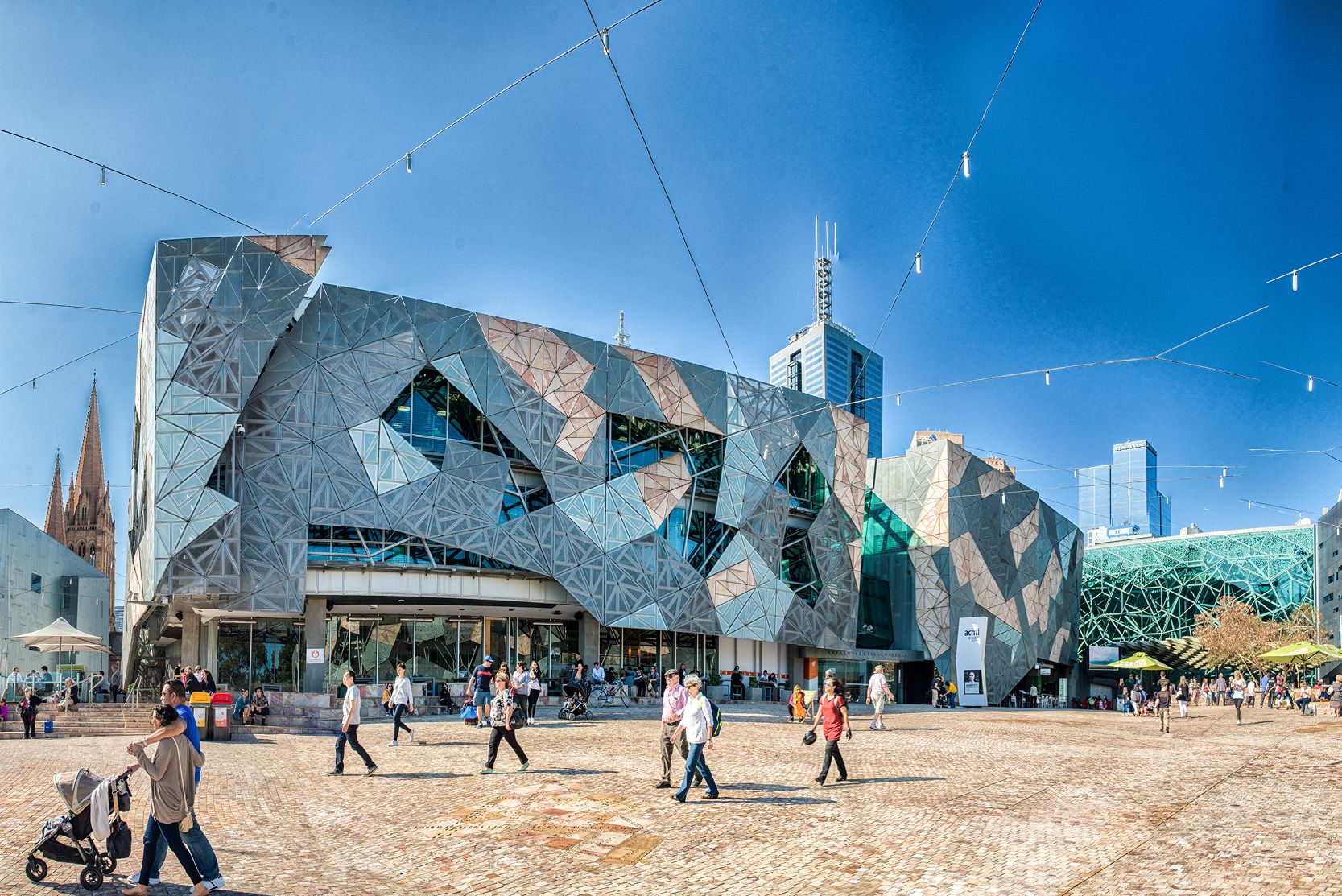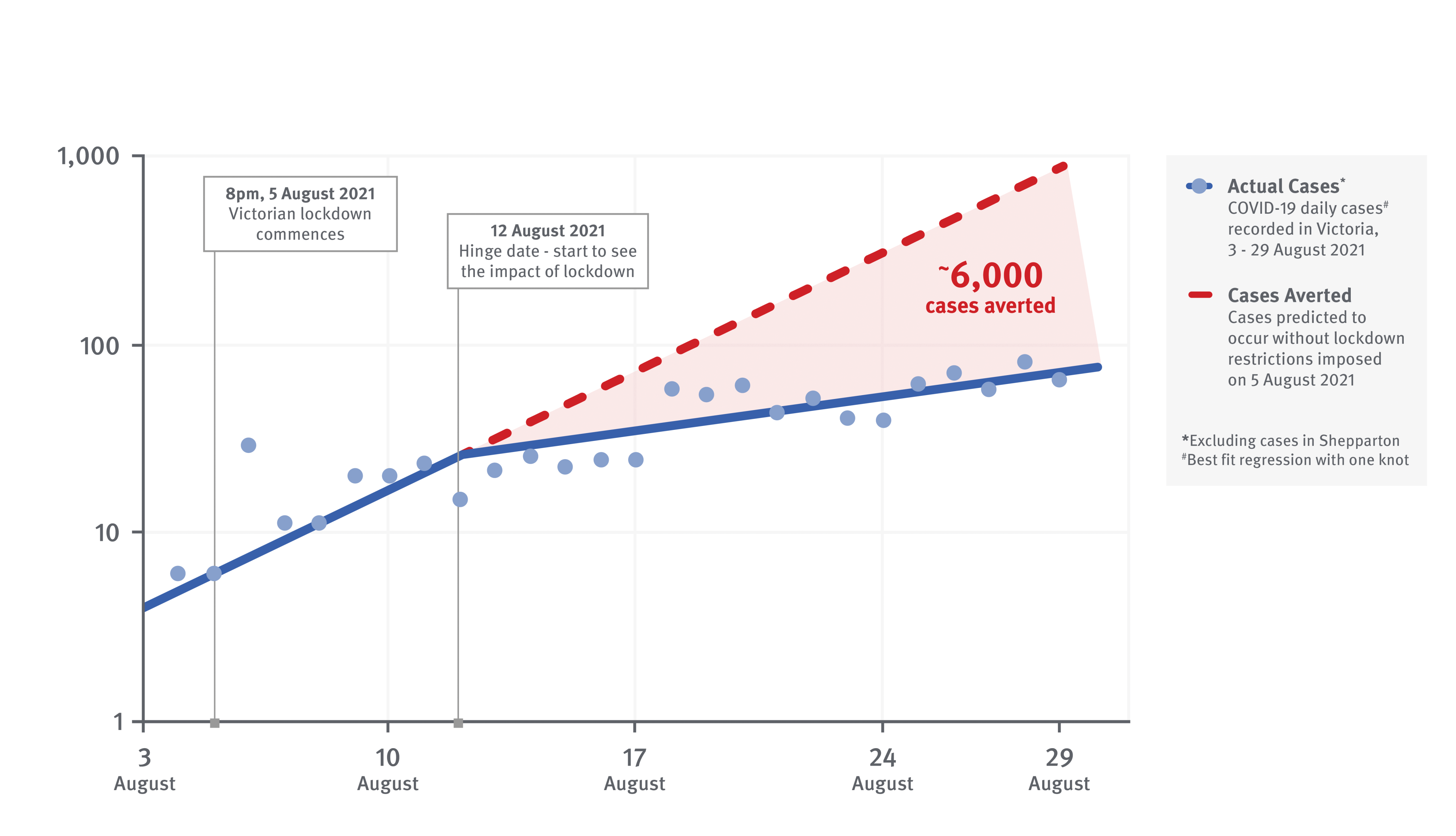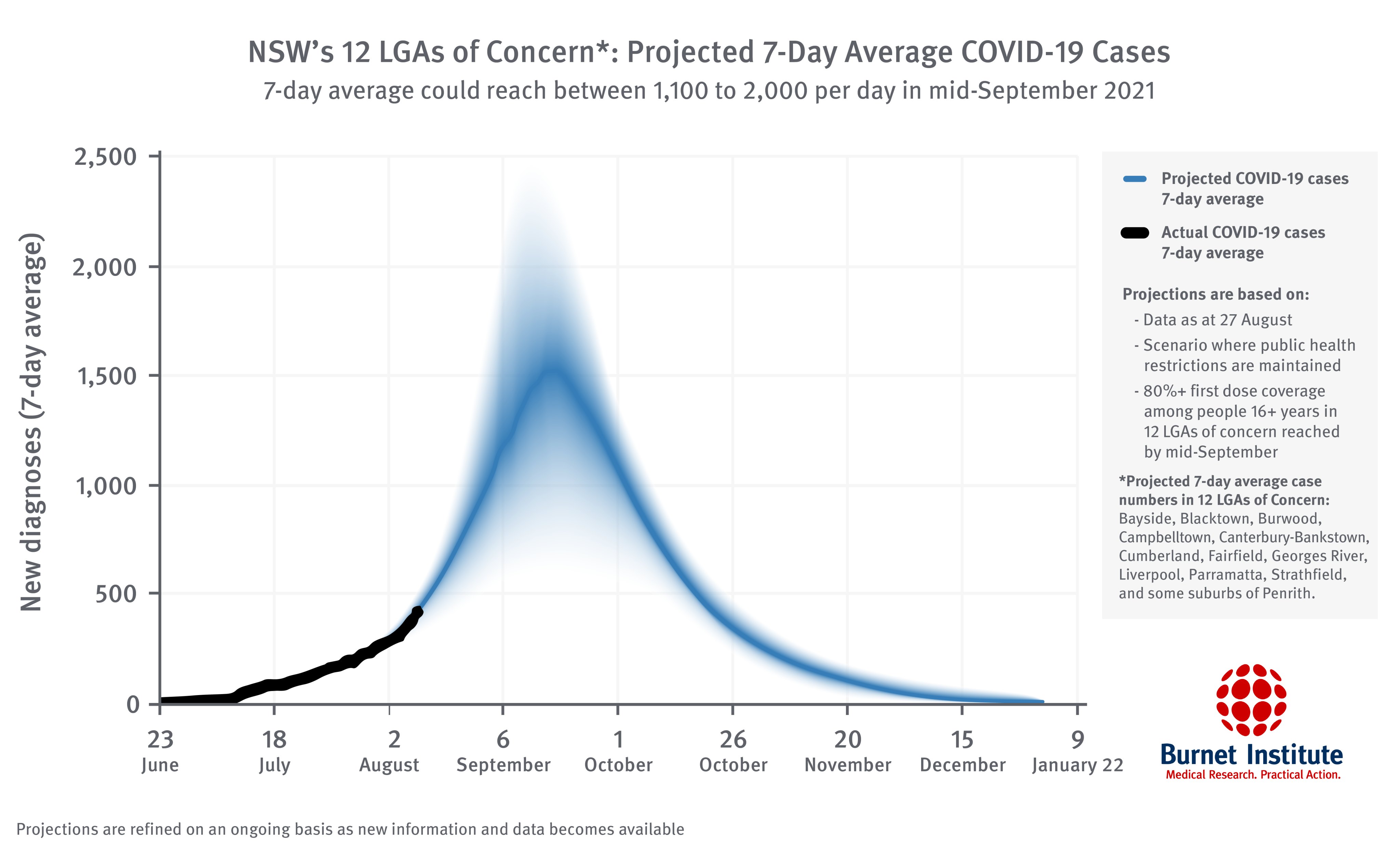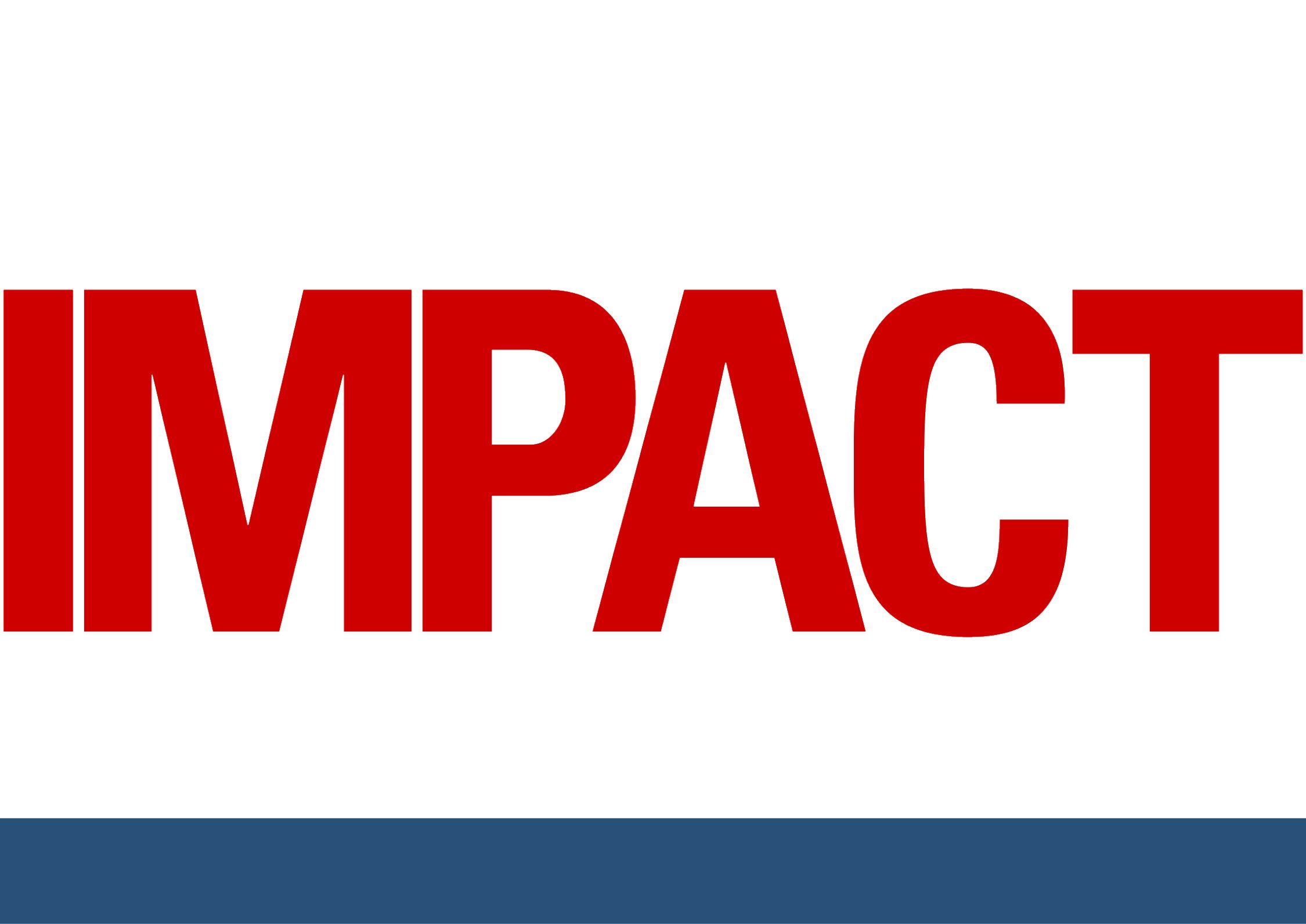Modelling
COVID-19:
Can we predict
the future?

Modelling a safer way out of the global pandemic was some of Burnet's most prominent COVID-19 work in 2021.
Burnet Institute has played a key role in helping Australia’s decision-makers strike a balance between COVID-19 and its effects, and the restrictions imposed on the community to counter the virus.
Head of Modelling, Dr Nick Scott, says scientific models are not developed to provide certainty; instead, they are created to show the likelihood of different outcomes occurring, and how this can change as a result of different decisions.

Burnet’s modelling has projected the likelihood of cases, hospitalisations and deaths from COVID-19 exceeding different thresholds, based on what public health restrictions are implemented to prevent community transmission.
This has helped guide the Victorian and NSW Governments as they make difficult decisions on which public health measures to enact or ease, and which population cohorts should be targeted for testing.
“You can run scenarios in the model to just test things before you do them in real life. You can ask ‘what if’ questions,” Dr Scott said.
Professor Margaret Hellard AM, Burnet Deputy Director and infectious diseases clinician said, as the situation changes, so too must the models.

Burnet modelling shows Victoria’s community effort helps avert around 6,000 COVID-19 cases.
Burnet modelling shows Victoria’s community effort helps avert around 6,000 COVID-19 cases.
Behind the projections are underlying assumptions based on emerging data on a wide variety of factors. This comes from other research such as The Optimise Study, which Professor Hellard co-leads, to gather information on people’s social contact.
“Early in the pandemic, we had to use data from studies 10 years ago. But now we use recent data from our own work as well as new data from other studies to inform the models,” Professor Hellard said.
“Different vaccines and new strains of SARS-CoV-2 (the COVID-19 virus) – with differing levels of infectiousness, virulence and resistance to vaccines – all need to be taken into account in models.”
While Australia gets closer to vaccinating most of its population, Dr Scott said COVID-19 and its variants will be a fact of life for some time in low-income countries with limited vaccine supplies.
“We’re adapting the (COVASIM*) model so that it can simulate multiple strains at the same time and the way they interact with one another,” he said.
Ongoing, updated Burnet modelling is providing guidance for the Victorian and NSW Governments in their ‘roadmaps’ out of Delta COVID-19 outbreaks.
“This is where modelling groups work really well with other public health teams to get a series of options on the table,” Dr Scott said.
Professor Hellard is quick to point out where the modelling team’s work starts and where it ends – they present options to governments and policymakers, and possible consequences of those options based on the prevailing information.
“You’re trying to say in the future, what are reasonable likely scenarios that will occur?” she said. “Questions like – do we want just light restrictions being held, or do we go in and out of lockdowns – they’re decisions for government. These are conversations that they will know far better than us, what they think is the trade off.
“Models present options to governments and policymakers, and possible consequences of those options based on the prevailing information.”
ENSURING MODELS DON’T COME TRUE
Dr Scott says criticism of models which make predictions and then don’t pan out are misguided.
“You can be in a situation where you have 10 options available, so you run 10 scenario analyses looking at what happens if we did any of these,” he said.
“By definition, nine of them are going to be wrong in the sense that they won’t match the data, because that scenario never actually happened in the real world.
“This was the case with the early models that were saying we were going to have tens of thousands of deaths (in Australia in 2020). And it’s not that those models were wrong, it’s just that they ran a scenario where we didn’t do lockdowns and didn’t have those responses.”
Modelling other infectious diseases
Dr Scott and his team have worked on mathematical models for many years and have helped governments around the world enact change to maximise the impact of available resources.
“The work Nick has done on hepatitis C elimination has had a global impact, as it has with hepatitis B and vaccination globally,” Professor Margaret Hellard AM said.
This was recognised with Dr Scott winning a National Health and Medical Research Council (NHMRC) Emerging Leadership Grant, which he will dedicate to modelling solutions to emerging problems in Australia’s effort to eliminate hepatitis C.
“Australia is at a critical juncture in its elimination program where ‘easy-to-reach’ individuals have already been treated, and the focus will need to shift to ensure that no-one is left behind,” Dr Scott said.
“Modelling can provide vital evidence for how testing, linkage to care and treatment pathways can be targeted and optimised at the local level to meet national and global targets in the most cost-effective way.”
“Modelling can provide vital evidence for how testing, linkage to care and treatment pathways can be targeted and optimised at the local level to meet national and global targets in the most cost-effective way.”
Dr Scott said hepatitis C elimination strategies are also being developed for low- and middle-income countries, and modelling could identify the best way to achieve these with existing health system and funding constraints.
“A critical window of opportunity exists for ensuring that country-level responses to hepatitis C are evidence-based, cost-effective, and maximise the impact achieved with available resources,” he said.

Burnet’s modelling was used to simulate the greater Sydney population in the 12 Local Government Areas (LGAs) of concern. It showed the 7-day average could reach between 1,100 to 2,000 per day in September 2021. Responses implemented by the NSW Government are estimated to have averted a substantive number of infections and deaths.
Burnet’s modelling was used to simulate the greater Sydney population in the 12 Local Government Areas (LGAs) of concern. It showed the 7-day average could reach between 1,100 to 2,000 per day in September 2021. Responses implemented by the NSW Government are estimated to have averted a substantive number of infections and deaths.
*SCIENTIFIC MODELS USED BY BURNET INSTITUTE
COVASIM is an individual-based model that can assess the impact of easing COVID-19 restrictions. Developed by Burnet Institute and the Institute for Disease Modelling in the USA, COVASIM provides governments with more specific and precise data to inform their COVID-19 responses. MACROMOD is an approach to measure the impact of control measures on COVID-19 in the population. It estimates this impact by the change in the epidemic growth rates. By projecting the growth rates before and after Melbourne’s lockdown in early August 2021, MACROMOD showed that about 6,000 cases of COVID-19 were averted in the following three weeks.
You're reading IMPACT magazine | Subscribe today

Make an Impact | Donate Today
Please donate today. Your donation will enable us to focus on safe birthing in the time of COVID-19 to improve health outcomes for mothers and babies in Papua New Guinea.
Contact Us
If you would like to discuss this edition with our team please contact Tracy Parish.
E: communications@burnet.edu.au
T: +61 3 9282 2111
Where possible people who appear in images included in this publication were photographed with their permission. There is no implication that these people have any infectious diseases.
Stay across the latest from Burnet Institute
Subscribe to IMPACT magazine today
Discover the IMPACT of Burnet’s medical research breakthroughs and public health projects in the Institute’s bi-annual magazine.
